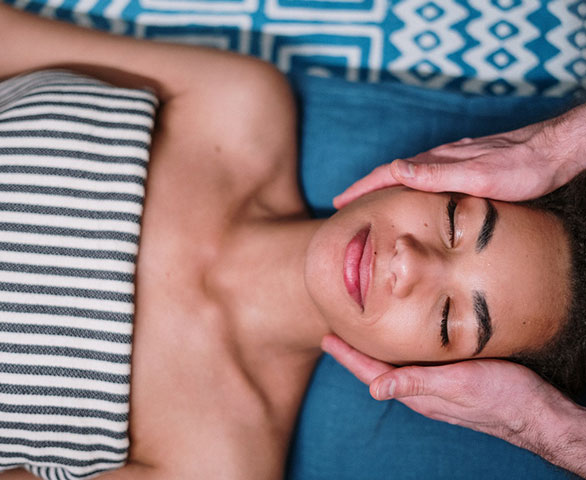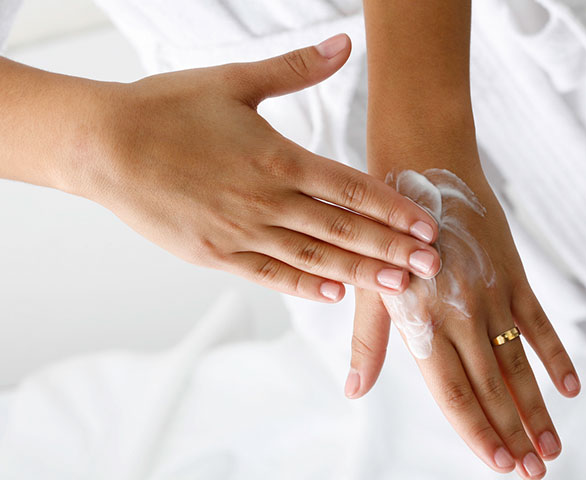Shea butter is a hugely popular skincare ingredient, known for its nourishing, moisturizing, and healing properties. Great for all skin types, because it is non-comedogenic, anti-inflammatory, and is full of antioxidants – it also contains a small amount of sun protection . With such impressive qualities, many brands display shea butter proudly on their labels despite using barely enough to utilize its benefits. To fully reap the benefits of shea butter, a product should contain a high amount of it, which is why we proudly add between 20% and 25% of pure shea butter to our range of products, and one of the reasons why our creams are so loved.
TIP: HOW MUCH SHEA BUTTER IS IN MY CREAM?
Unsure how much of the key ingredient is actually in the product you’re using? Check the ingredient list – the higher up it is on the list, the more of it they’ve used. If the product is near the bottom of the list, they’re using only small traces of shea butter. Shea butter is one of the most versatile ingredients in skincare. Because of its wide range of properties, from being anti-inflammatory to deeply nourishing, it is great for all skin types and can help with most skincare concerns.
WHY SHEA BUTTER?

How does shea butter benefit the skin?
- Restores skin to its correct condition: As a natural emollient, shea butter works to restore the skin condition. For dry skin, shea butter adds much-needed moisture, and for oily skin, it balances out sebum production.
- Protects the skin barrier:Various properties of shea butter, such as stearic acid, promote and protect the health of the skin barrier, working to reduce inflammation.
- Calms and prevents skin reactions:The combination of moisturizing and anti-inflammatory properties means that shea butter can calm skin reactions when they arise. It can also help to prevent possible reactions by creating a healthy moisture barrier to the skin. Maintaining a healthy skin barrier will protect the skin from damage caused by everyday stresses such as pollution, and it is even gentle enough to use on babies to soothe a diaper rash.
- Heals and repairs damaged skin:From acne to eczema, shea butter contains a group of naturally occurring antioxidants called polyphenols that, when applied to the skin, can help to repair and rejuvenate skin cells.
Find out more about how shea butter helps the skin in our blog post: 5 reasons why you should use a product that contains shea butter.
What makes shea butter so good?
Shea butter has a particularly unique structure that makes this natural fat powerful when it comes to combating skin concerns:
- Vitamin A, E, and F are the powerhouse combination of antioxidants that give shea butter the ability to encourage healthy skin:
- Vitamin A is considered a core ingredient when it comes to anti-aging, the reason for this is because it increases the rate of new cell turnover. By increasing the turnover rate, the skin is able to shed damaged cells easier and faster, allowing new skin cells to replace them.
- Vitamin E helps to protect skin cells by forming a barrier around them to keep moisture locked in and free-radicals out, this action supports the skin’s ability to fight inflammation.
- Vitamin F is not quiet a vitamin, it is actually an essential fatty acid that helps the skin to retain moisture. As we age, the skin barrier starts to break down, to prevent this from happening the skin needs to retain moisture in its cells, and Vitamin F assists in this process by preventing moisture loss.
- Triglycerides come from the fatty part of the shea nut, and give shea butter products their skin-softening effect, acting as an emollient. Emollients provide a non-comedogenic barrier over the skin that prevents moisture loss and improve overall skin condition.
- Cetyl esters are found in the waxy part of the shea butter, and also assist in locking in moisture to condition the skin.
- Linoleic, palmitic, stearic, and oleic acids work together to strengthen the skin barrier and boost the skin’s natural ability to retain moisture. With these acids strengthening the skin, the skin is able to balance its own natural oils.
Where does shea butter come from?
Shea butter is derived from kernels within the seedpod of the shea tree and has been used for centuries by people living in the “African Shea Belt”, a region that
spans across West and East Africa.
The shea tree is very slow-growing, and often protected in the regions that it grows. It takes approximately 10 to 20 years for the first flowers to appear on the shea tree, and it is not until around 25 years that the tree bears fruit, which is where the seedpods are located from which the oil is extracted.
DID YOU KNOW? Traditionally, women are the sole owners of shea butter making know-how which is passed from generation to generation in both rural and urban
areas.
Shea butter has an incredibly important history across the African continent and its medicinal and beauty properties have been known, studied, and cultivated for thousands of years.
You can read more about this in our blog post: From Continent to counter top: the origin of shea butter.

How can I use shea butter?
As a soothing natural product, shea butter can be used for every family member on any part of their skin, from the face to your baby’s bottom.
Here are some ways you can use shea butter:

- Face cream: Due to its unique makeup, shea butter works on all skin types and even works on healing skin concerns like acne and eczema.
- Diaper cream: It’s a common misconception that diaper creams need to be thick to be effective. A nourishing shea butter diaper cream is rapidly absorbed, its anti-inflammatory properties soothe aggravated bottoms, and it’s an effective barrier against excessive moisture.
- Body cream: Quickly absorbed and packed with antioxidant vitamins that both promote circulation and encourage healthy skin cell growth, shea butter will leave your skin in its best possible condition.
- Hand cream: If you’re frequently washing and sanitizing your hands, you will love a rich shea butter cream to moisturize without leaving a sticky residue.
- Shave cream: The soothing and anti-inflammatory properties of shea butter make this a fantastic product to use after shaving. It will help to reduce ingrown hairs and shaving rash, and can be used on the face for beard shaving, and also on the legs, underarms, and bikini area.
